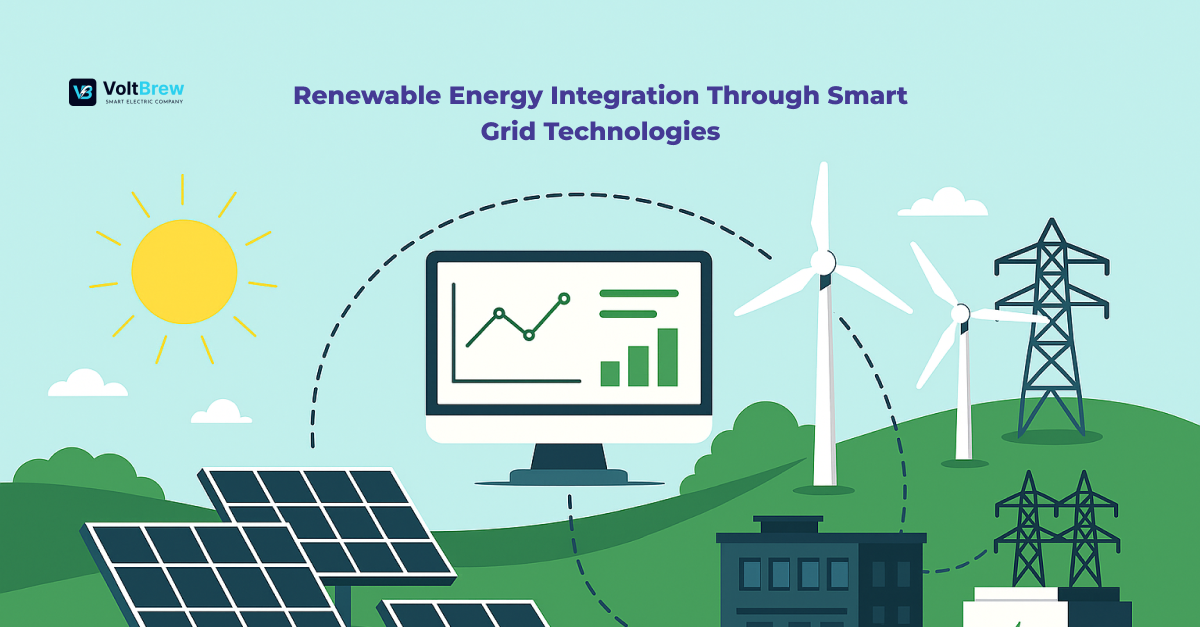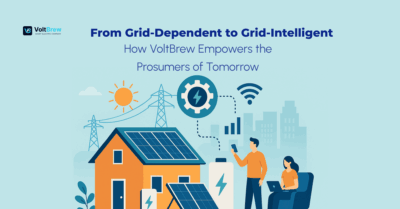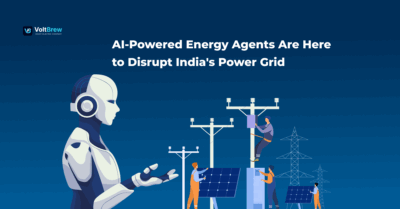The power system is undergoing a dramatic shift: renewable generation is surging to all-time highs. In 2024, renewable sources added a record 858 terawatt-hours of electricity – 49% more than the previous high – pushing low-carbon power to 40.9% of global generation. This “coming wave” of wind and solar unlocks cleaner energy but also strains legacy grids. Intermittent renewables like wind and solar can impact grid stability, causing voltage and frequency issues without proper controls. In short, integrating massive renewables requires new tools and strategies. Grid operators are adopting smart grids, digital networks with real-time monitoring to manage diverse energy resources and ensure grid reliability.
Grid modernization starts with digital infrastructure. Smart grids use advanced sensors, communications and control systems to monitor flows from every generator and demand point. Real-time visibility helps operators use existing power lines more efficiently, avoiding the need for costly new infrastructure. It also enables instant response to demand fluctuations and renewable variability.
Energy Management Systems (EMS), also known as Distributed Energy Resource Management Systems (DERMS), power this visibility.
They gather and coordinate data from rooftop solar, battery storage, and EV chargers.
These platforms manage hundreds of small resources to regulate voltage and power flow on distribution feeders.
This helps smooth local surges and reduce grid congestion. By deploying these smart controls and AI-based forecasting, grids can safely push more renewable power through existing infrastructure.
Aggregating Distributed Resources: DERs, Microgrids, and VPPs
Distributed Energy Resources (DERs) like solar panels, wind turbines, batteries, EVs, and smart appliances are rapidly growing at the grid edge.
Instead of relying on centralized power plants, utilities now manage millions of decentralized energy sources.
To handle this shift, grid operators are adopting advanced aggregation models.
One key approach is the Virtual Power Plant (VPP).
VPPs combine diverse DERs such as rooftop solar, community batteries, and EV chargers into a single, dispatchable unit.
These systems can ramp output up or down to meet demand, provide reserves, or ease local grid congestion.
Regulators are supporting VPPs to manage peak loads using solar-plus-storage setups.
Studies show VPPs can be deployed faster than traditional power plants and reduce the need for costly transmission upgrades.
Microgrids offer another flexible solution.
These localized systems can operate independently with a mix of solar, wind, storage, and backup generators.
They support remote areas, critical infrastructure, and act as testing grounds for DER integration.
Some even feed excess power back into the grid, behaving like distributed generators.
DERs also enhance grid flexibility which is a key need for integrating variable renewables.
Aggregated smart thermostats and water heaters, for example, can lower demand when renewable output dips, emulating a peaker plant.
Vehicle-to-Grid (V2G) technology turns parked EVs into mobile batteries, potentially meeting future peak demand needs.
To manage these assets, operators use advanced Energy Management Systems (EMS) or DERMS.
These platforms send real-time dispatch signals or price-based incentives, enabling smart inverters and software to balance supply and demand.
Together, VPPs, microgrids, and smart controls turn decentralized energy into a powerful, flexible grid resource.
Demand-Side Flexibility: Demand Response and Smart Controls
Demand response (DR) complements supply-side measures by adjusting load to match renewables. Utilities are expanding DR programs that reward consumers for shifting consumption. For instance, factories or offices might be paid to reduce power use during evening peaks or ramp up when midday solar is abundant. Even residential devices participate: smart thermostats, home batteries and electric water heaters can cycle off briefly to free up capacity. These demand-side actions effectively “create” flexible supply by lowering demand at critical times.
Energy management systems also enable automated demand flexibility. Behind-the-meter EMS in buildings and homes learn occupants’ needs and react to grid signals. A smart home EMS might delay an EV’s charge or modulate HVAC during a grid stress event, with minimal impact on comfort. The net effect is a smoother demand curve that better matches renewable output. Industry experts note that coordinated DR and efficiency programs can significantly defer infrastructure costs. For example, managed charging of EVs and optimized use of DERs in California and New York could reduce the need for new distribution capacity, saving tens of billions through 2035. In all cases, the key is visibility and control: grid operators need real-time data (via smart meters and sensors) and dispatch rights (or markets) to call on these flex resources when needed.
Local Energy Markets and EV Infrastructure
Looking ahead, peer-to-peer (P2P) energy trading and robust EV infrastructure will further transform integration. P2P trading platforms allow neighborhoods of homes and businesses to buy and sell solar power among themselves, often using blockchain or AI to match supply and demand. By enabling local energy exchanges, P2P models keep more renewable energy in the community and reduce transmission losses. For example, AI-driven decentralized trading can forecast neighborhood demand and schedule local generators (like a cluster of solar arrays) in a way that best fits real-time needs. While still an emerging concept, these local markets could complement utility-scale operations by smoothing micro-grids and giving prosumers (consumer-producers) a direct role in balancing.
Electric vehicles (EVs) amplify this shift towards a distributed grid. The rapid build-out of EV charging infrastructure means millions of flexible loads will connect to distribution networks. Smart-grid tools are being deployed to handle this: utilities increasingly install sensors and controls in areas with fast chargers to avoid bottlenecks. In fact, one study noted a 75% jump in EV charger investments in 2022 alone – and smart-grid upgrades allow these chargers to communicate with the grid and stagger their power draw. When integrated, EVs and chargers become a two-way asset: smart charging can absorb midday solar, and V2G can later feed power back. As IEA analysts explain, a fully digital grid provides the “visibility and control needed to mitigate grid bottlenecks” from EV loads.
Conclusion: Toward a Flexible, Renewable-Ready Grid
Integrating the renewable surge demands a holistic approach. As experts emphasize, there is no single silver bullet – rather, grid operators must blend upgrades in hardware, software and market design. This means modernizing infrastructure (new lines, sensors and storage) and overlaying them with advanced EMS/DERMS platforms that choreograph DERs, VPPs, DR and EVs in real time. It also requires forward-looking policies: streamlined interconnection rules, time-varying tariffs, and standards for P2P trading and V2G that unlock flexibility. Training and workforce development are critical too, so engineers can manage these complex systems safely.
Looking forward, the trend is clear: greater grid flexibility and decentralization will be the key to a reliable clean grid. In practice, this could mean grid-edge devices with embedded intelligence, ubiquitous sensors that create a self-healing network, and software agents that autonomously optimize power flows. By embracing smart-grid technology, demand-side programs, and new market arrangements, operators can turn the renewable variability from a liability into an asset – using it to power a more resilient, efficient electricity system.





